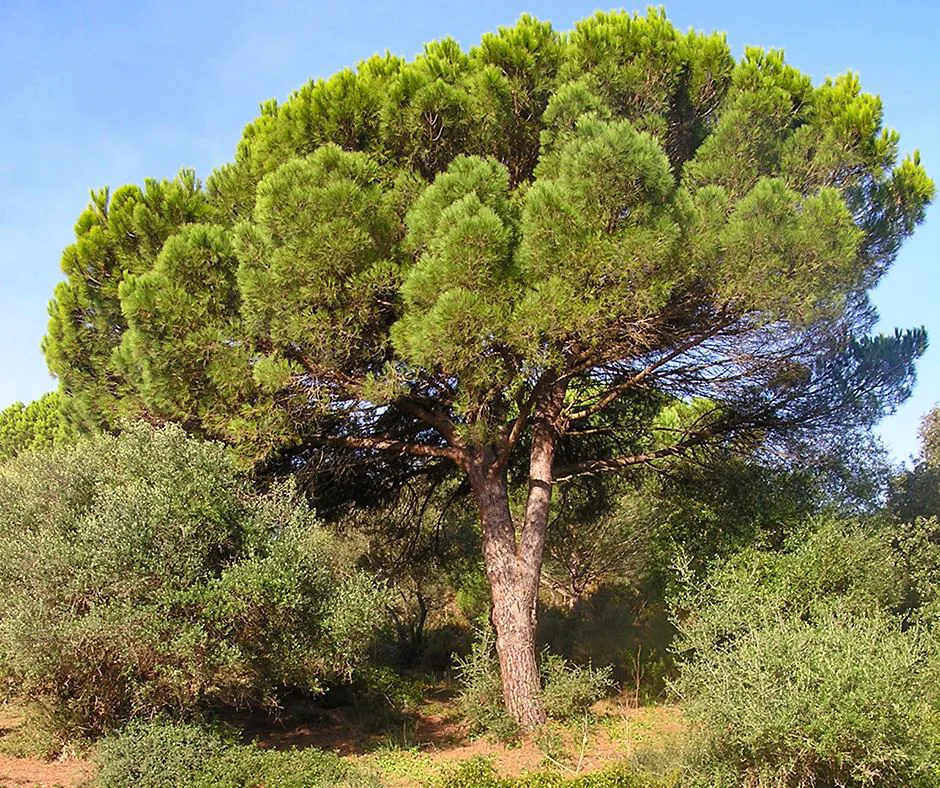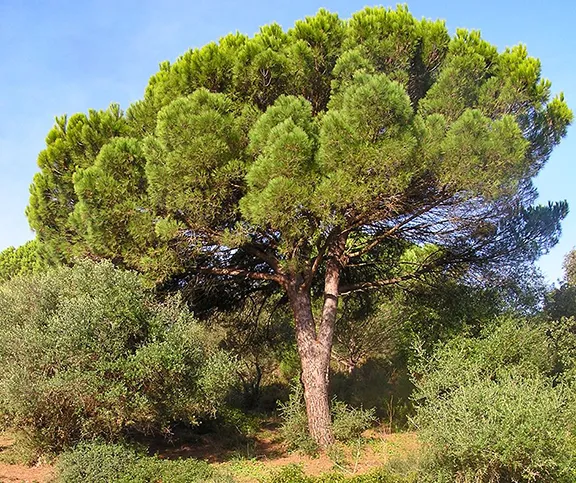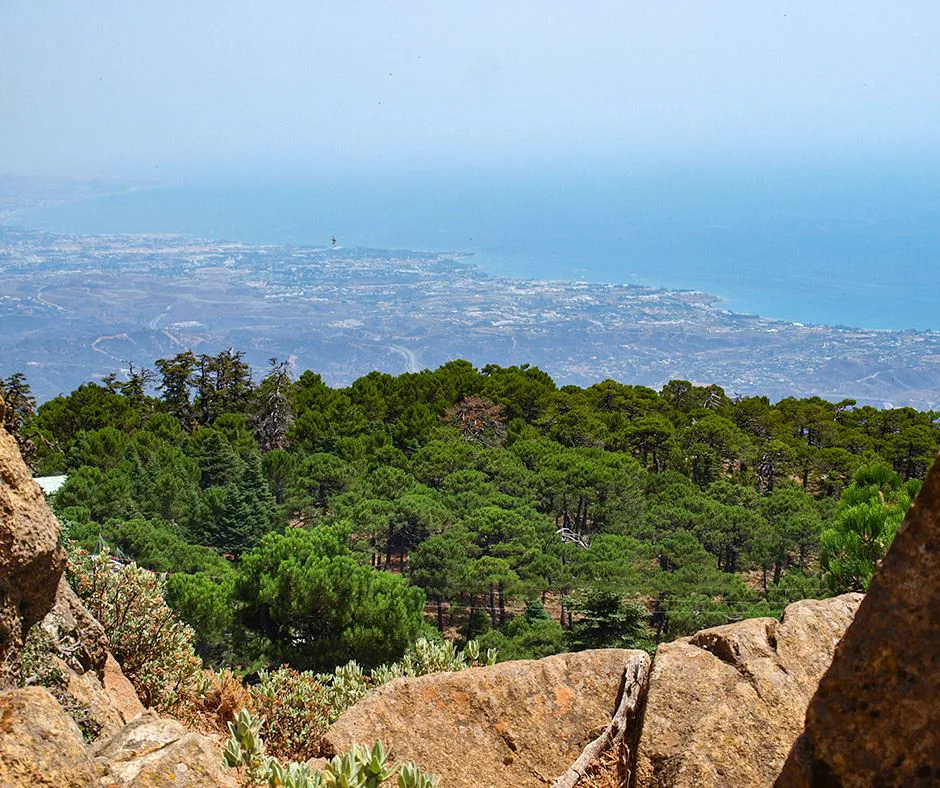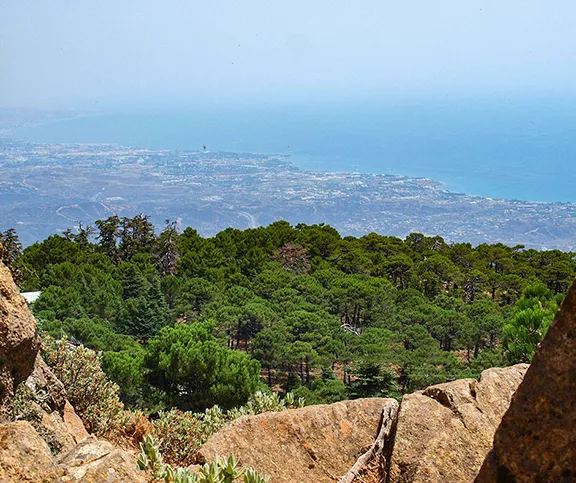The Stone pine is an evergreen tree that originates from the Mediterranean area. Its nuts have been eaten in Andalucia for over 6000 years.
By Nick Nutter | Updated 21 Sep 2022 | Andalucia | Recipes |
Login to add to YOUR Favourites or Read Later


Stone Pine in Pinar del Rey, San Roque, Cadiz province
Pine nuts, piñónes, are an ingredient in many Mediterranean dishes, from the classic pine nut, basil and parmesan pesto, to a Moroccan inspired chicken, apricot and pine nut casserole that knocks coq au vin into next week. They also happen to be very good for you. Have you ever wondered how they end up on the grocer’s shelf and why they are so expensive?


Mixed pines on Los Reales, Estepona, Malaga province
In Spain, pine nuts come from the Pinus pinea or Stone pine commonly called Pino Piñonero. The pine cones mature in the third year producing large, flavoursome pine nuts inside a hard shell. Andalucia has over 200,000 hectares of stone pine woodland and, together with Castilla y Leon, produce well over 90% of the pine nuts used in Spain. Having said that, the nuts from all pine trees (and spruce and fir trees) are edible, the larger the cones, the larger the nuts inside.
The Stone pine is an evergreen tree that originates from the Mediterranean area and is easily recognized by its outline, the dense crown is almost a globe in young specimens whereas in older trees it is shaped like a wide, spread parasol, supported on large, elegant radial branches. The mature trunks have deep, vertical cracks in the bark. In woodlands and forests, they form an undulating rich green canopy as opposed to the conical shapes of other pines.
They are a common sight on the Mediterranean coast of Málaga and the Atlantic coast of Cádiz provinces. Pine nuts have been collected for about 6000 years and the process today, although somewhat more mechanised than say 100 years ago, is still labour intensive. In some of the more remote areas of Andalucia, such as in the Sierra Segura in Jaén province, pine nuts are still an important part of the economy. It was in the small ethnological museum in Siles that my eyes were opened to the importance of the Pinus pinea and how their nuts are prepared.
All parts of the Pinus pinea tree are used; from the nuts, to the large cones that produce the nuts to the wood, the needles, the bark and even the sap, and have been for thousands of years. The sap is used as a glue and water sealer, in cosmetics and candles and for making turpentine. The cones are used as fuel and to make charcoal, the bark is made into a herbal extract that is anti-inflammatory and has antioxidant effects, the needles also have medicinal properties and the wood is used in the manufacture of furniture. A pretty good all-rounder the pine tree.
Pine nuts take roughly 16-18 months to grow and mature, but some, including the stone pine, can take up to three years. Most pine tree cones bud in spring and grow until the end of summer, sometimes the beginning of autumn. The cones become dormant during autumn and winter and reach maturity towards the end of the following spring. They are ready to harvest about 10 days before the green cone begins to open. Mature stone pine cones in Andalucia are ready from about November through to February.
The cones are collected whilst they are still just closed. Not surprisingly the nuts are a favourite food for small mammals and many birds once the cones have opened so you have to beat them too it. Once picked, the cones are kept in a dry, warm, critter free environment until they open. When ready, the nuts, in their shells, will fall out of the cone if you shake it. There are all sorts of old, once steam or diesel engine driven jiggers that were used to help this process along, many now long abandoned in fields.
The seeds, in their shells, are then washed. This is to remove any debris from the jigging process but also to separate bad seeds from good. The good shells sink whilst the hollow shells and those containing bad nuts, float. Then the shells are dried.
The seeds now have to be removed from their shells and again, 100 years ago, there were steam or diesel driven threshing machines to perform this task. The steam engines used the empty cones for fuel and these jiggers and threshers were once common on small fincas. Some villages had a communal engine and machines, the crumbling buildings, with short chimney, now empty and derelict.
The shells have to be cracked and the seeds extracted. In days gone by, the seeds were then graded by hand into sizes. Now of course, it is all automated.
Collecting and processing pine seeds to extract the piñónes is still undertaken by hand in some of the more remote areas of Andalucia.
Interestingly, the stone pine grows on some of the lower flanks, up to about 1,200 metres above sea level, of the Sierra Nevada in Granada province. In the United States, the identically named Sierra Nevada are known for their pine nuts.